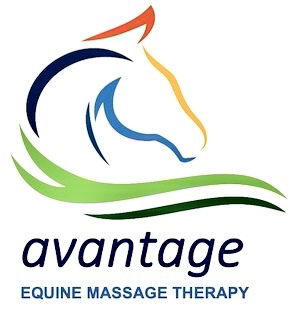F.A.Q s
WHAT TO EXPECT?
SHORT TERM BENEFITS?
We believe that even after first massage session you should already be able to witness some visible transformative results.
Visible Postural Changes:
improvements in your horse's posture, reflecting enhanced muscular balance and alignment due to releasing incorrect patterns.
Improved Range of Movement:
Your horse may indicate increased flexibility and suppleness in muscles, tendons and joints.
Reduction of Pain:
Effective massage may help reduce pain and promote horse's overall comfort and well-being.
Relaxation:
After the massage the horses will likely exhibit a state of deep relaxation and should be left to rest to allow the post massage effects take place.
Neural Pathway Rewiring:
After the massage your horse may have difficulty "finding their feet" which is a result of neural pathways rewiring. This normally happens if horse has been compensating the movement with incorrect muscle and hasn't yet found a new way of going.
Post Massage Effects:
The benefits of our massage therapy will continue to unfold over next few days. Your horse may initially appear sore as their body adjusts, especially if the compensatory muscles have been used for long time.
Note: After the massage the horses muscles will be very relaxed and will need to rest from riding/ etc. apart from in hand work for approx. 24-48 hours.
After the therapy session, you should be able to witness more range of movement, better posture, reduced soreness/ pain, more relaxed demeanour and relieve from pain and restriction.
In long term, successful therapy can lead to changes in muscle tone and eventually improved posture and range of motion in a previously restricted areas.
However, to reach better results it may take a few sessions depending on the problem experienced. Please note that if the horse is not responding to manual therapy after multiple sessions, it is important to contact your Vet because the underlying problems may not be muscle related.
LONG-TERM BENEFITS?
Hind Limb Protraction
Stress Reduction
Stress and Cortisol
Heart Rate and Performance Study
WHY AND WHEN TO MASSAGE A HORSE?
Pre and Post-Competition/Exercise Massage:
Massage helps to invigorate and warm up muscles increasing circulation, elasticity and movement while preventing injuries.
After events; it aids in recovery, lactic acid build-up, DOMS, prevents injuries by more allowing more muscle elasticity to protect from tendon injuries and promotes relaxation.
Remedial Massage for Movement Dysfunction:
Corrects compromised muscle tissue adhesions and allows for unrestricted movement and improved balance.
Chronic Problems :
Conformation and/or compensation pattern defaults, age related stiffness, limited joint mobility, arthritis, past chronic injuries or scarring.
Maintenance:
Regular massage ensures more pliable muscles to protects from tendon injuries, as well as early identification of problems, tension and pain areas.
Understading the purpose and timing of equine massage ensures optimal performance, recovery and well-being for your horse.
Every horse, regardless of the discipline is an athlete and requires muscle care. Even the paddock horses are susceptible to injures, slips, kicks and muscle tears during their play. Active competing horses particularly benefit from regular muscle care to perform at optimum level.
We recommend massage as a preventive maintenance for all horses. Proactively treating muscles to remain elastic helps prevent more severe issues such as tendon problems and tears occurring and is therefore more cost-effective in the long run.
Muscles are interconnected, meaning that a small change in one area or a muscle spasm will have an effect and can create a chain reaction, leading to restricted movement and compensatory patterns.
The obvious signs indicating that the horse may benefit from a massage include:
If the horse exhibits significant lameness, it is important to contact your Vet first for a diagnosis. As horse massage therapist, we cannot diagnostic assessments for your horse.
However, we are dedicated to work together with your vet to determine the best action for your horses well-being.
However, through our approach to the entire horse at every massage, and not only the problem area, we can often find and narrow down the areas that have a problem and provide a detailed sheet to indicate them to you and your vet.
BEFORE THE THERAPY
Prior to your horse's massage, please inform us of any concerns, diagnosis, medications and injection as or operations that the horse has undergone.
We kindly request your horse should be dry and reasonably clean to avoid friction irritance on skin during the massage therapy.
We are looking forward to helping you achieve the best with your horse.
SHORT TERM BENEFITS?
We believe that even after first massage session you should already be able to witness some visible transformative results.
Visible Postural Changes:
improvements in your horse's posture, reflecting enhanced muscular balance and alignment due to releasing incorrect patterns.
Improved Range of Movement:
Your horse may indicate increased flexibility and suppleness in muscles, tendons and joints.
Reduction of Pain:
Effective massage may help reduce pain and promote horse's overall comfort and well-being.
Relaxation:
After the massage the horses will likely exhibit a state of deep relaxation and should be left to rest to allow the post massage effects take place.
Neural Pathway Rewiring:
After the massage your horse may have difficulty "finding their feet" which is a result of neural pathways rewiring. This normally happens if horse has been compensating the movement with incorrect muscle and hasn't yet found a new way of going.
Post Massage Effects:
The benefits of our massage therapy will continue to unfold over next few days. Your horse may initially appear sore as their body adjusts, especially if the compensatory muscles have been used for long time.
Note: After the massage the horses muscles will be very relaxed and will need to rest from riding/ etc. apart from in hand work for approx. 24-48 hours.
After the therapy session, you should be able to witness more range of movement, better posture, reduced soreness/ pain, more relaxed demeanour and relieve from pain and restriction.
In long term, successful therapy can lead to changes in muscle tone and eventually improved posture and range of motion in a previously restricted areas.
However, to reach better results it may take a few sessions depending on the problem experienced. Please note that if the horse is not responding to manual therapy after multiple sessions, it is important to contact your Vet because the underlying problems may not be muscle related.
LONG-TERM BENEFITS?
- Resolving muscles spasms and pain which will result to better function of tendons and joint mobility.
- Speeding recovery: accelerates recovery after competition, injury and illness and generating general wellbeing.
- DOMS (Delayed Onset Muscle Soreness) increasing oxygen and nutrients to help assist damaged cells after competition, injury and illness and generating general wellbeing.
- Scar tissue and adhesion alleviation.
- Aids Nutrient, oxygen and blood flow. Lymphatic drainage and excess fluid flow.
- Resolving muscle and pain related behaviour problems.
- Reduction of emotional stress due to pain relief and accessing para sympathetic nervous system to lower cortisol concentration.
- Free movement due reduction of discomfort and past injuries.
- Improved coat quality due to nutrient circulation and increased sebaceous gland secretion.
- Identifies tension and pain areas early when used as a preventative treatment.
Hind Limb Protraction
Stress Reduction
Stress and Cortisol
Heart Rate and Performance Study
WHY AND WHEN TO MASSAGE A HORSE?
Pre and Post-Competition/Exercise Massage:
Massage helps to invigorate and warm up muscles increasing circulation, elasticity and movement while preventing injuries.
After events; it aids in recovery, lactic acid build-up, DOMS, prevents injuries by more allowing more muscle elasticity to protect from tendon injuries and promotes relaxation.
Remedial Massage for Movement Dysfunction:
Corrects compromised muscle tissue adhesions and allows for unrestricted movement and improved balance.
Chronic Problems :
Conformation and/or compensation pattern defaults, age related stiffness, limited joint mobility, arthritis, past chronic injuries or scarring.
Maintenance:
Regular massage ensures more pliable muscles to protects from tendon injuries, as well as early identification of problems, tension and pain areas.
Understading the purpose and timing of equine massage ensures optimal performance, recovery and well-being for your horse.
Every horse, regardless of the discipline is an athlete and requires muscle care. Even the paddock horses are susceptible to injures, slips, kicks and muscle tears during their play. Active competing horses particularly benefit from regular muscle care to perform at optimum level.
We recommend massage as a preventive maintenance for all horses. Proactively treating muscles to remain elastic helps prevent more severe issues such as tendon problems and tears occurring and is therefore more cost-effective in the long run.
Muscles are interconnected, meaning that a small change in one area or a muscle spasm will have an effect and can create a chain reaction, leading to restricted movement and compensatory patterns.
The obvious signs indicating that the horse may benefit from a massage include:
- Pain face/ body stance
- Irritability when touched
- Reluctance
- Bucking and biting
- Reduced range of motion
- Tension, pain and weakness
- Lacking forward impulsion
- Struggling to engage hind limbs
- Stiffness and restriction
If the horse exhibits significant lameness, it is important to contact your Vet first for a diagnosis. As horse massage therapist, we cannot diagnostic assessments for your horse.
However, we are dedicated to work together with your vet to determine the best action for your horses well-being.
However, through our approach to the entire horse at every massage, and not only the problem area, we can often find and narrow down the areas that have a problem and provide a detailed sheet to indicate them to you and your vet.
BEFORE THE THERAPY
Prior to your horse's massage, please inform us of any concerns, diagnosis, medications and injection as or operations that the horse has undergone.
We kindly request your horse should be dry and reasonably clean to avoid friction irritance on skin during the massage therapy.
We are looking forward to helping you achieve the best with your horse.



